
Spa Classic Recap
Top-class racing amid four seasons of weather conditions per day
WORDS & IMAGES BY: WOUTER MELISSEN
One of the jewels on Peter Auto’s historic racing calendar each year is the Spa Classic. This year’s eleventh annual edition boasted packed grids across its nine race group roster. The cars that hit the Circuit de Spa-Francorchamps ranged from early 1950s sports cars to sports cars of the 2010s.
Celebrating the rich history of the Spa 24 Hours, there was a special emphasis on the Heritage Touring Cup with a night race that finished after midnight early on Sunday morning. In addition to the races there was also track time for cars from enthusiast clubs and a demonstration of 3.5-liter Formula 1 cars.
The legendary Belgian circuit is loved and revered for many reasons. On the one hand, its undulating layout and famous corners earn the track much acclaim, but it also has a reputation for changeable conditions. Often, the weather affects one part of the track more than others. The circuit lived up to all expectations during the 2023 Spa Classic with beautiful sunshine one moment and a few showers the next. Fortunately for the drivers, all the evening sessions were run under dry conditions. American racer Carlos de Quesada was certainly impressed: “Spa is now my favorite track, I loved it!”
It was a very busy weekend with 430 racing cars spread over the nine race groups. With grids limited by the length of the track, the seven kilometers-long Spa-Francorchamps can accommodate many cars. For example, no fewer than seventy-five cars entered the two-hour Sixties Endurance race, and the Endurance Racing Legends field of modern sports prototypes and GTs was fifty-five cars strong. Many of these cars were interesting but we have picked five that stood out.
BMW 635 CSI
“This car means a lot to me,” Emanuele Pirro explains: “I drove it with two of my best friends Roberto Ravaglia and Gerhard Berger for Schnitzer Motorsport.” The Italian racer was reunited with the very BMW 635 CSI Group A that he had raced in the 1986 Spa 24 Hours in the striking Original Teile livery: “Schnitzer was a special team with which we had a special bond. The paint job was also very special and it was hand painted; there was no vinyl at the time.”
Pirro has mixed emotions when he thinks back of that Spa 24 Hours: “It was a race we normally could and should have won. We were leading with a decent margin with less than an hour to go and then we had a stupid mechanical issue. The bracket that held the alternator to the engine failed, so the alternator basically fell off. We had to stop and replace the battery, so we could complete the race. We finished second but it was a really bitter result because it would have been wonderful to win the race with Gerhard and Roberto.”
During the 2023 Spa Classic, Pirro shared the once works-supported car with its German owner in the Heritage Touring Cup. Although his track time was limited during practice and qualifying, Pirro thoroughly enjoyed himself during the races: “I really focused on driving well and fast. With the older cars I focus more on the style and technique but this, a more modern car on slicks, I could really try to find every last tenth in each corner. I was incredibly happy, and the car was so good, it was a very special feeling.”
Although the relatively modestly tuned Group A cars are not the fastest in the touring car field, Pirro clocked the ninth fastest lap time during the second race, nearly two seconds faster than fellow pro racer Nick Padmore in a sister car. Together with the owner, Pirro won the Group A class in the one-hour race.
Aston Martin DB3S
Shortly after taking control of Aston Martin, David Brown embarked on an ambitious motorsports program that ultimately led to a victory for the DBR1 at Le Mans a decade later. While the original DB3 of 1951 was still a relatively rudimentary machine, Aston Martin really stepped it up a notch with the DB3S introduced in 1953. It featured a purpose-built tubular chassis, aluminium bodywork and a three-liter straight-six engine.
With rival manufacturers like Ferrari and Jaguar running larger engines, the DB3S mainly chased class wins. One example did win the Tourist Trophy outright in 1953 and won the three-liter class at Le Mans twice. Aston Martin also experimented with fixed-head bodywork and offered the DB3S to customers. By the time the DBR1 superseded the DB3S, Aston Martin had constructed eleven works cars and twenty cars earmarked for customers.
Competing in both the Greatest’s Trophy and the Fifties Legends race during the 2023 Spa Classic was among the most successful of all works cars, DB3S/6. Built ahead of the 1954 season, it was originally fitted with a coupe bodywork that was both very slippery but also unstable at high speeds. Rebuilt with a roadster bodywork and fitted with Girling disc brakes, it was raced with more success from 1955 onwards. DB3S/6 won at Silverstone in 1955 and then placed second overall and first in class at Le Mans. As late as 1958, it finished on the Le Mans podium.
Entered at Spa-Francorchamps by its Argentinean owner, it finished fifth overall in the 80-minute Fifties Legends race. Against slightly more modern competitors, DB3S/6 – or “62 EMU” – finished fifteenth in the first Greatest’s Trophy race.
Sauber-Mercedes C11
Many racing cars have an instantly recognizable soundtrack, but few can match the truly menacing drone of the Sauber-Mercedes C11. Built for the 1990 World Sports Car Championship, it combined a brand-new carbon-fiber composite chassis with a twin-turbo V8 engine that could produce up to 1,000 bhp depending on the boost level. Despite being muffled by the two KKK turbochargers, the cross-plane V8 is instantly recognizable in the Group C field.
Raced in period with great success by the likes of Jean-Louis Schlesser, Jochen Mass and a young Michael Schumacher, the C11 entered in the Group C race during the Spa Classic was driven by long-time owner Kriton Lendoudis. This car was the test and development prototype for the C11 and was not raced in period. It has, however, had a long and successful historic racing career.
“Driving the C11, with around 900 hp, I can only say is addictive,” Lendoudis says: “I drove the car for the first time in almost five years and it was amazing that it has raw power but also is so well balanced.” The first of the two forty-five-minute Group C races was held in damp conditions, but Lendoudis nevertheless managed to place second: “The changing conditions on Saturday were very challenging but I feel I have managed to perform well.”
The Greek racer did one better on Sunday, winning the Group C outright.
Jaguar E-Type Semi-Lightweight
At the end of the 1956 season, Jaguar announced its (temporary) retirement from motorsport. It was very much mission accomplished as the C-Type and D-Type had scored four wins in the last six editions of the 24 Hours of Le Mans. Company founder William Lyons was aware of the marketing benefits of racing, so when the E-Type was launched in 1961, many of the earliest cars were sold to privateer racing teams in the hope of the all-new Jaguar scoring on Sunday and then selling on Monday.
Commonly referred to by its registration number “YRP 999,” this E-Type is one of these early cars. In fact, it was the twentieth Roadster built. Its first custodian was Derek Wilkinson, who entered it at Oulton Park early in 1961, where the E-Type made its competition debut. It was raced by John Bekaert for Wilkinson and then sold to John Woolfe. He updated the car, replacing many of the steel panels with aluminium ones to bring it up to “Semi Lightweight” specification. It has effectively been raced ever since and more recently competed in no less than ten Goodwood Tourist Trophy races.
YRP 999 was one of the seventy-five entries in the two-hour Sixties’ Endurance race, which was run mostly in darkness. The competition E-Type was shared by owner Gary Wright and Joe Twyman. “It was the first time I drove the car,” Twyman recounted. “It is a lovely car to drive, very predictable. Unfortunately, we did not get the benefit of a full race because Gary was hit by a Cobra in the first stint, which put something out of alignment on the rear end.”
Racing at night with so many different cars and drivers provides quite a challenge. “It is very difficult to actually know who is going to do what and it does not necessarily always relate to the type of car itself. So you can have a Cobra that you think would be quick that is being driven at the pace of an MGB. Sometimes you can also get caught out by somebody that is following you with glare from their lights, but all in all that’s part of the challenge. The really well-driven cars are actually quicker in the dark with the lower ambient temperatures.”
Lola T70 Coupe
During the last couple of seasons, it has become obvious that the car to have in the Classic Endurance Racing 1 group is a Lola T70. Hugely successful in period, the T70 was a versatile design and in all fairness the moniker was applied to several very distinct racing cars. The original T70 was a Chevrolet small-block-engined Spyder that won the inaugural Can-Am Challenge Cup in the hands of John Surtees. It evolved over the next years and by the time the Mk3B Coupe was introduced in 1969, the T70 had benefited from substantial upgrades to the chassis and bodywork.
While early Spyders can also be raced in CER1, the most competitive T70s eligible are the Mk3 and Mk3B Coupes. Both are powered by five-liter versions of the small-block Chevrolet V8. Although a Mk3B won the Daytona 24 Hours in 1969, they were not quite as successful in Europe because the American engines rarely ran as well on the fuel available on this side of the pond. That has since been sorted and the T70 is a very common sight in European historic racing, prompting several runs of continuation cars to be built as well.
Among the genuine cars competing at Spa was the T70 Mk3 entered by a German historic racer. Originally built as a Coupe, it has had a colorful period racing career. In response to a rule change, it was converted to a unique Spyder configuration and fitted with a three-liter BRM V12 engine. Fortunately, the original body was preserved, and a subsequent owner had the car restored back to its former guise after it was retired from racing halfway through the 1969 season.
It was later raced in historic events by Nick Mason of Pink Floyd fame and spent twenty-five years in the hands of American collector George A. Hurd, Jr. Restored to its original British Racing Green in 2010, chassis SL73/113 was acquired by the current German owner in more recent years. At Spa, he finished fourth overall and third in class behind two other T70s.
The eleventh edition of the Spa Classic was an impressive success, which brought 430 competition cars, 800 club vehicles and over 22,000 spectators together in the Belgian Ardennes. The Spa-Francorchamps circuit lived up to its reputation, providing top-class racing amid four seasons of weather conditions each day.
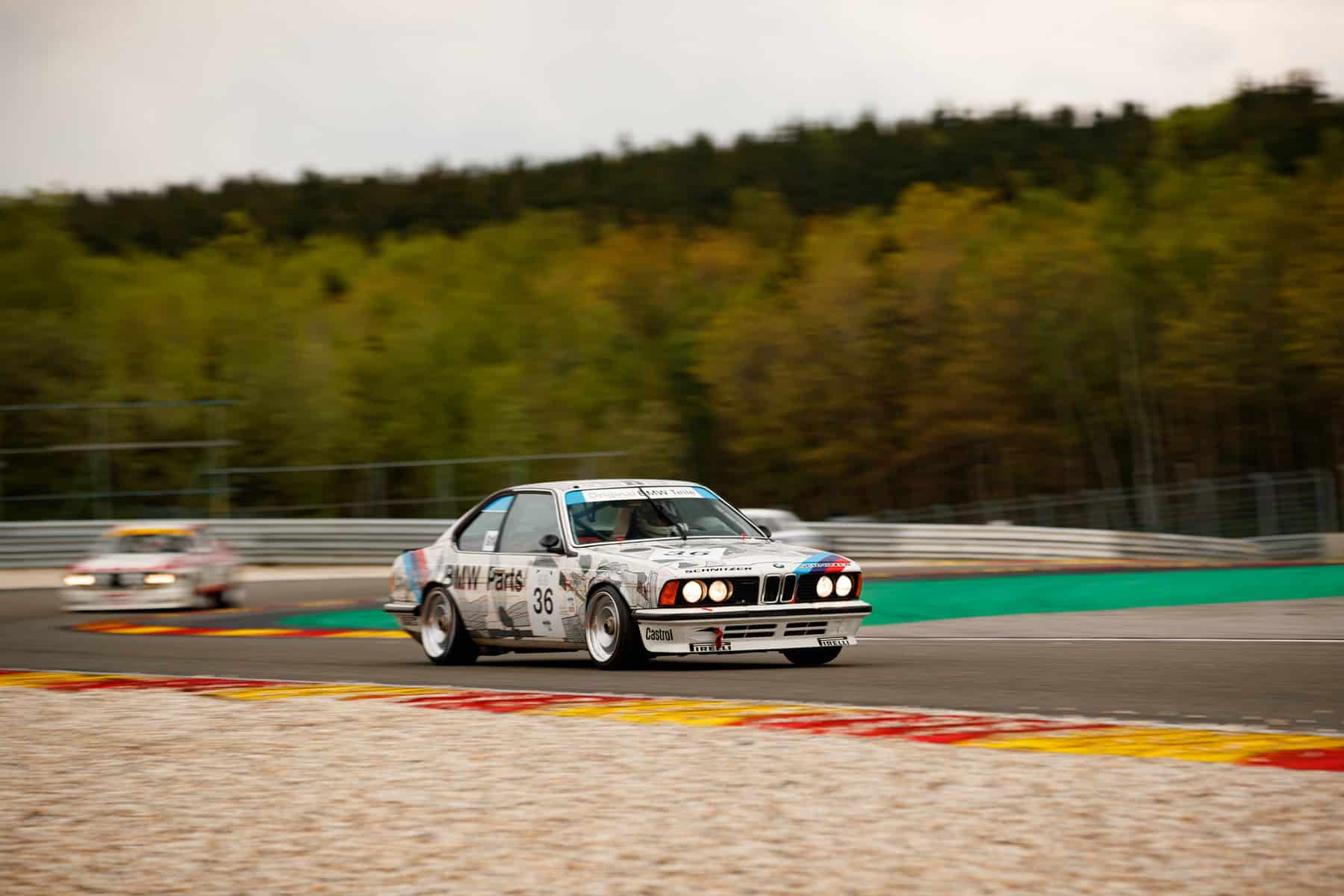
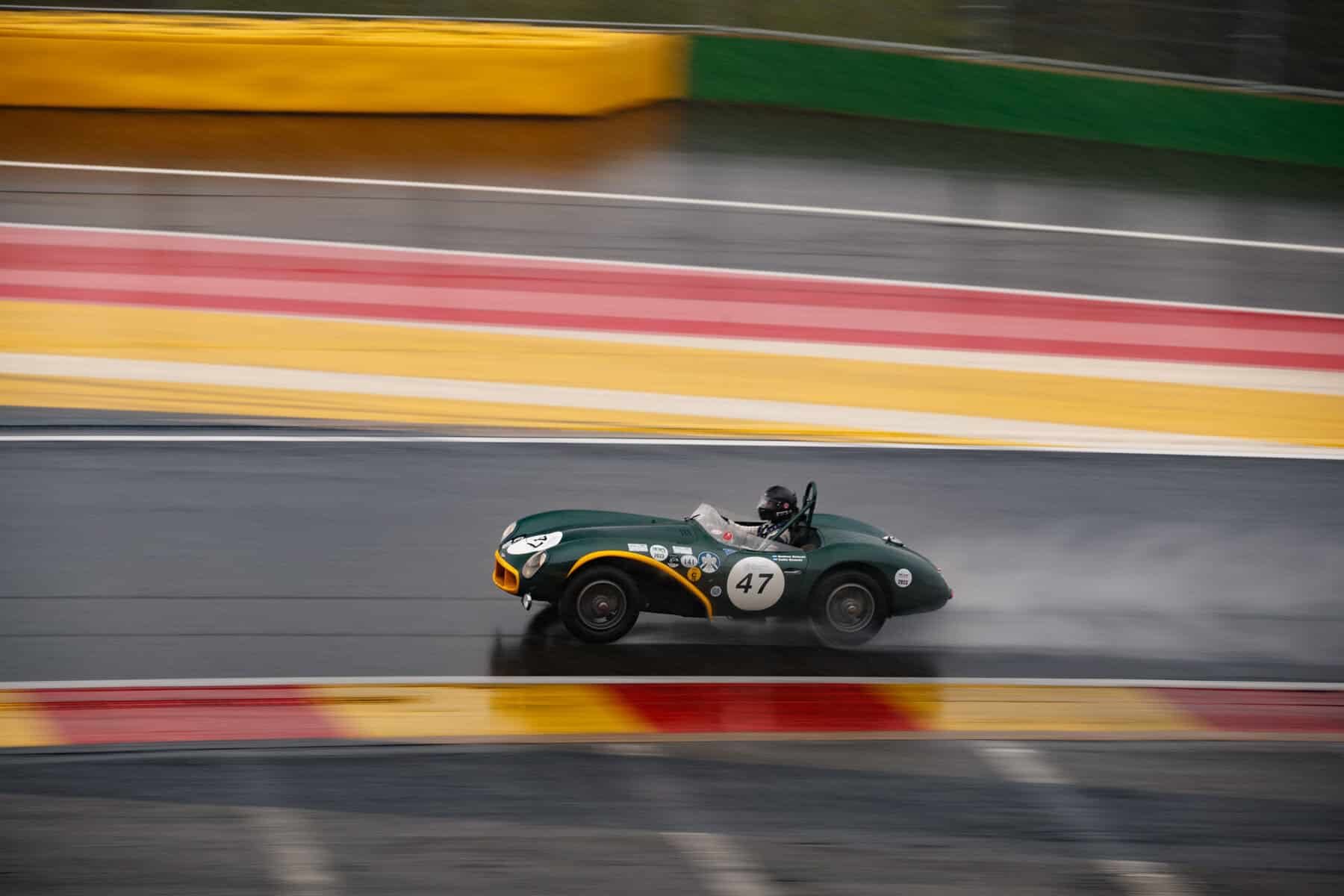
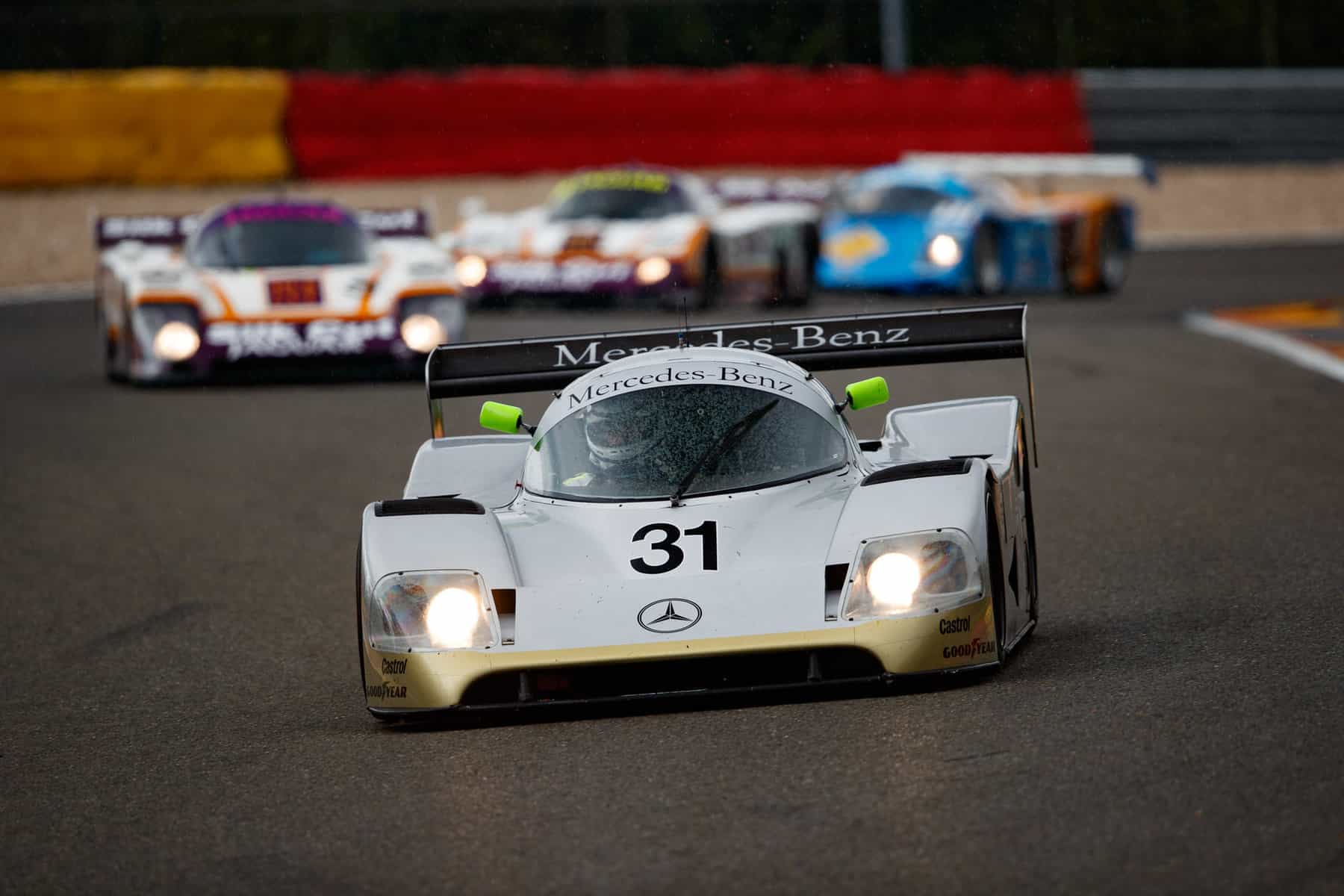
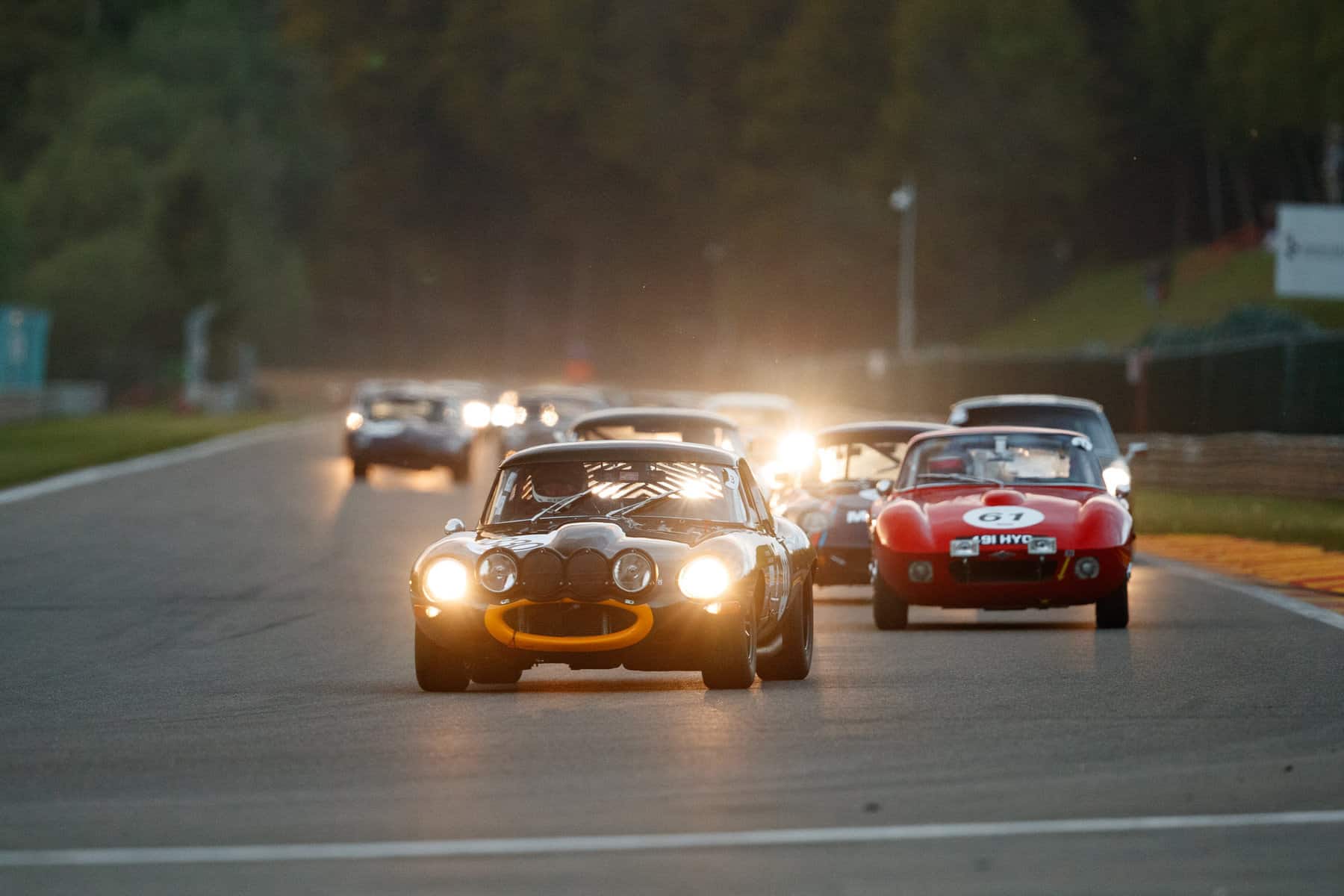
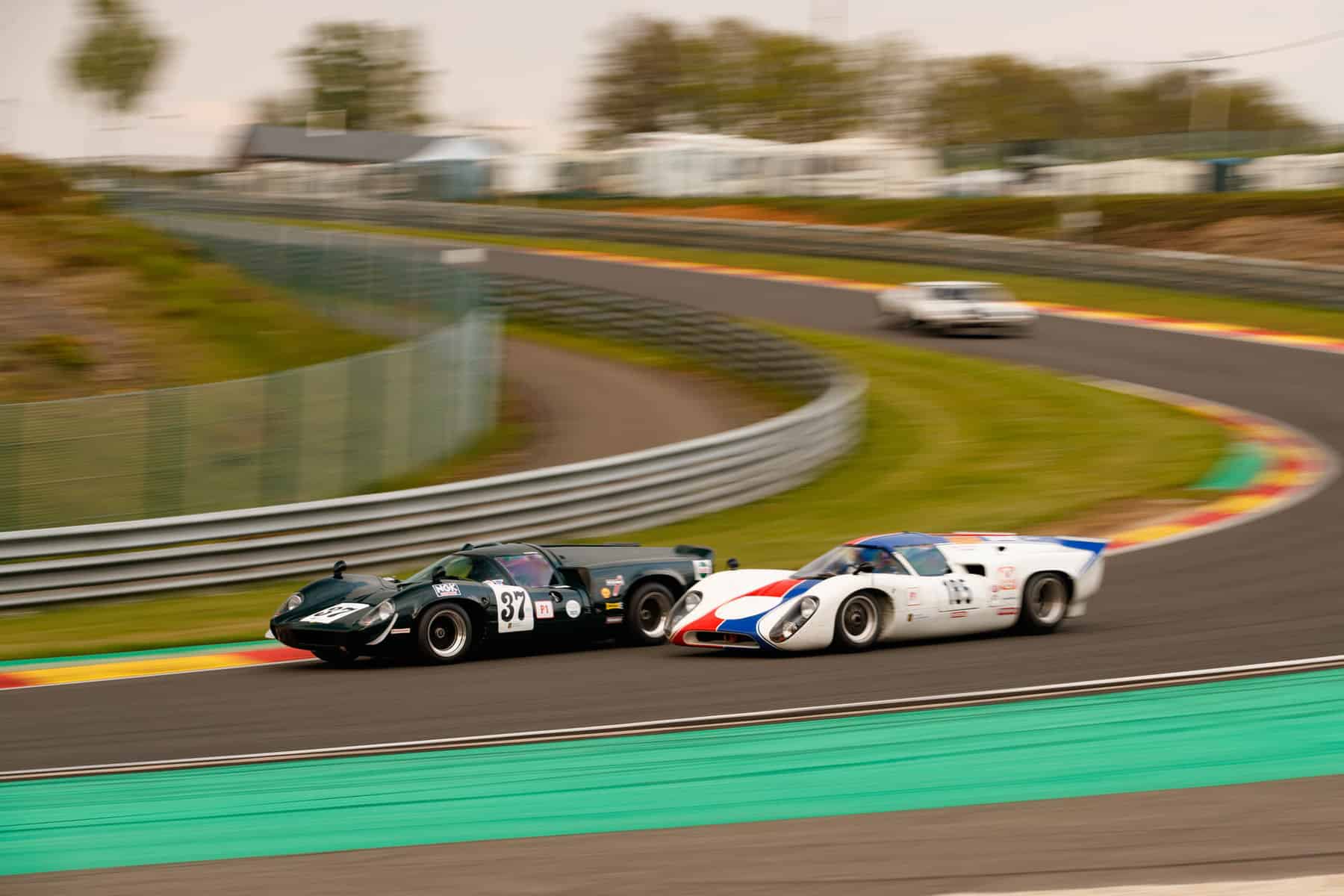


![alfa gtz perfectly imperfect webannerl[1]](https://automedia.revsinstitute.org/wp-content/uploads/2024/08/Alfa-GTZ-Perfectly-Imperfect-webannerl1-uai-1200x800.jpg)

